Confused with how to convert cake pan sizes? In this article, I’ve outlined how to easily swap one pan out for another. Plus, I’ve included a free printable for you to keep on hand in your own kitchen!
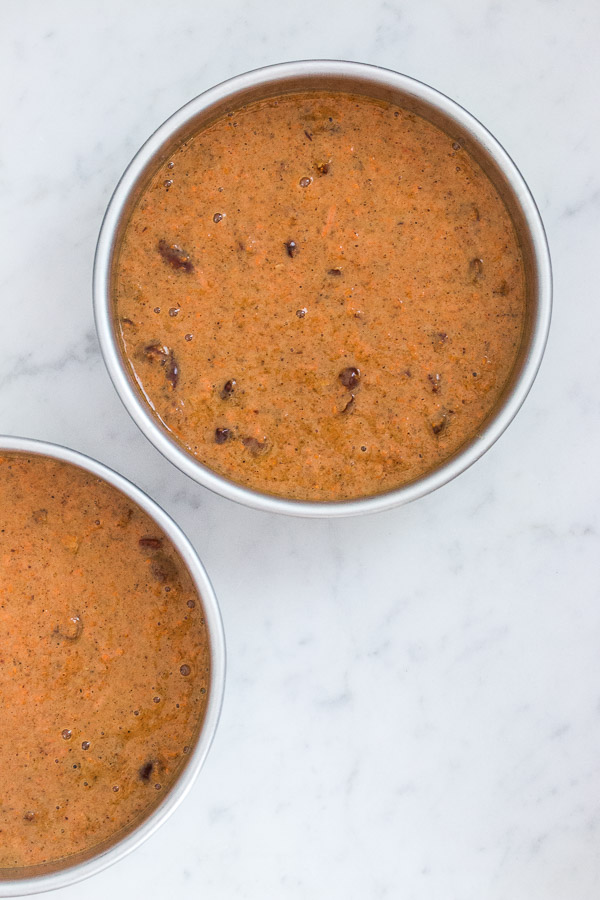
I get a lot of questions on the blog about converting cake pan sizes. Whether you’re a seasoned baker or just starting out, adjusting recipes to fit cake pans other than what a recipe calls for can be confusing. Let’s say, for example, you want to make a batch of caramel brownies and the recipe calls for an 8×8-inch pan. You look through your kitchen cabinets and realize all you have are 9×9-inch and 9×13-inch pans. How do you alter the recipe to make enough batter for a different pan size?
Fortunately, converting cake pan sizes is simple; all it takes is a little bit of basic math (don’t worry, I promise it’s not difficult). In this article, I’m going to teach you how to convert cake pan size for any recipe and provide pointers on how to substitute one pan for another – without doing any math at all.
This post includes
Tips on converting cake pan sizes
To get started, here are some basic tips to follow anytime you convert a pan size for a recipe:
- You can always use a smaller pan. You can easily make a recipe with a smaller pan size than what the recipe calls for – just expect to have some batter leftover.
- Don’t overfill the pan with batter. It’s always best to not fill a pan more than ¾ of the way full with batter, so if you end up with more than this after converting a recipe, it’s best to make a mini version in a different pan, or simply not use the remaining batter.
- Tweak the baking time. Expect longer baking time for larger pans with more batter and faster baking times for smaller ones with less batter.
- Weigh your ingredients. This is the best way to get accurate measurements for any recipe.
- Stick with springform pans for cheesecakes. Cheesecakes typically bake better in springform pans with tall sides, so it’s best to convert one springform pan size for another. In addition, you’ll want to use a springform pan for cheesecakes so you can remove the sides once it’s chilled.
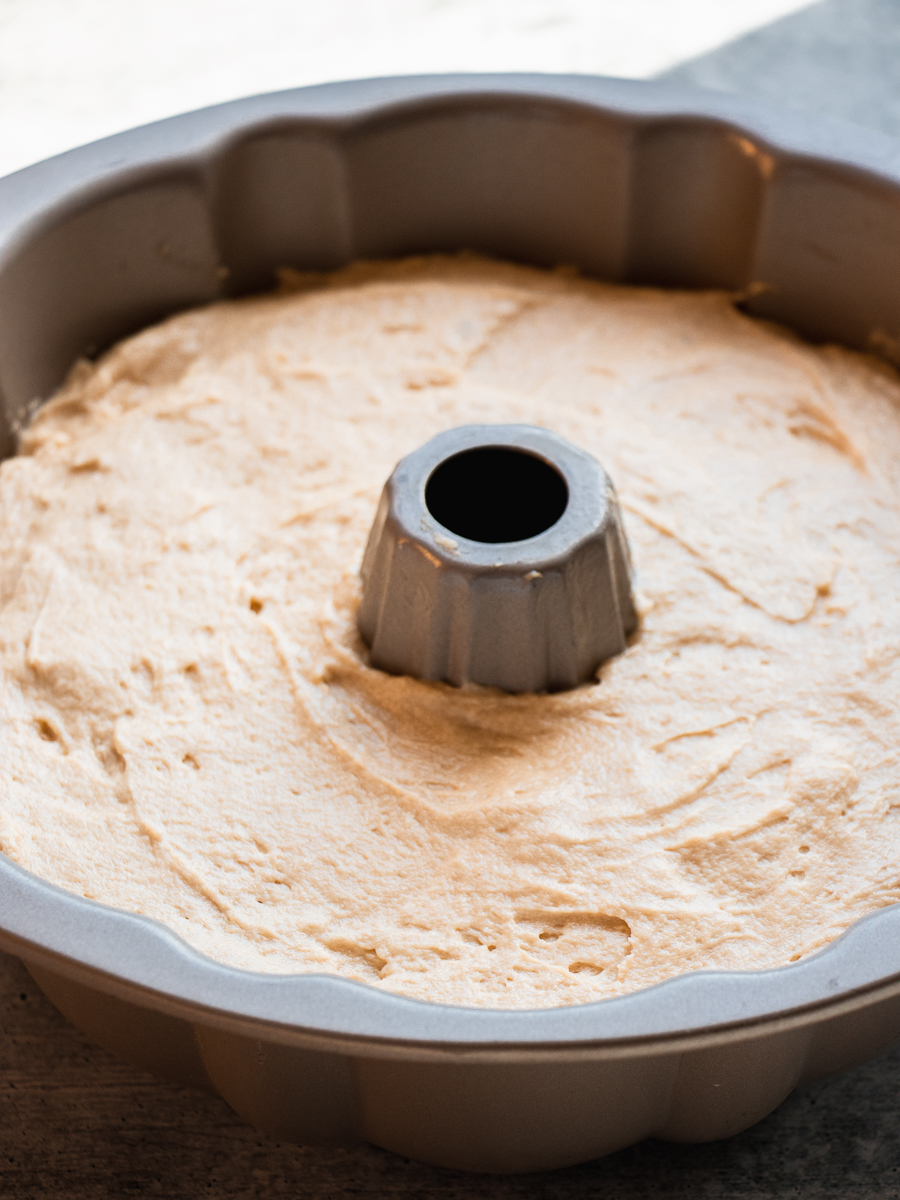
Common baking pan alternatives (free printable)
Below I’ve included a chart with common pan alternatives. I’ve also included a free printable to keep on hand in your own kitchen.
Remember that you don’t want to overfill your pan with batter. Sometimes when you convert a pan size, you may have leftover batter, but don’t fill your pan more than ¾ of the way. And if using a slightly larger pan than what the original recipe calls for, note that the cake may be a bit shorter.
| If a recipe calls for this pan | Use this instead |
|---|---|
| 8×8-inch square | 9-inch round 9×5-inch loaf pan Standard cupcake pan (will make 12-18 cupcakes) |
| 9×9-inch square | 10-inch round 11×7-inch rectangle Bundt pan |
| 11×7-inch rectangle | 9×9-inch square pan 10-inch round Bundt pan |
| 13×9-inch rectangle | Two 9-inch round pans |
| 8-inch round | 8.5×4.5-inch loaf pan |
| 9-inch round | 8×8-inch square 9×5-inch loaf pan Standard cupcake pan (will make 12-18 cupcakes) |
| 9×5-inch loaf pan | 9-inch round 8×8-inch square Standard cupcake pan (will make 12-18 cupcakes) |
| Bundt pan | 9×9-inch square 10-inch round 11×7-inch rectangle |
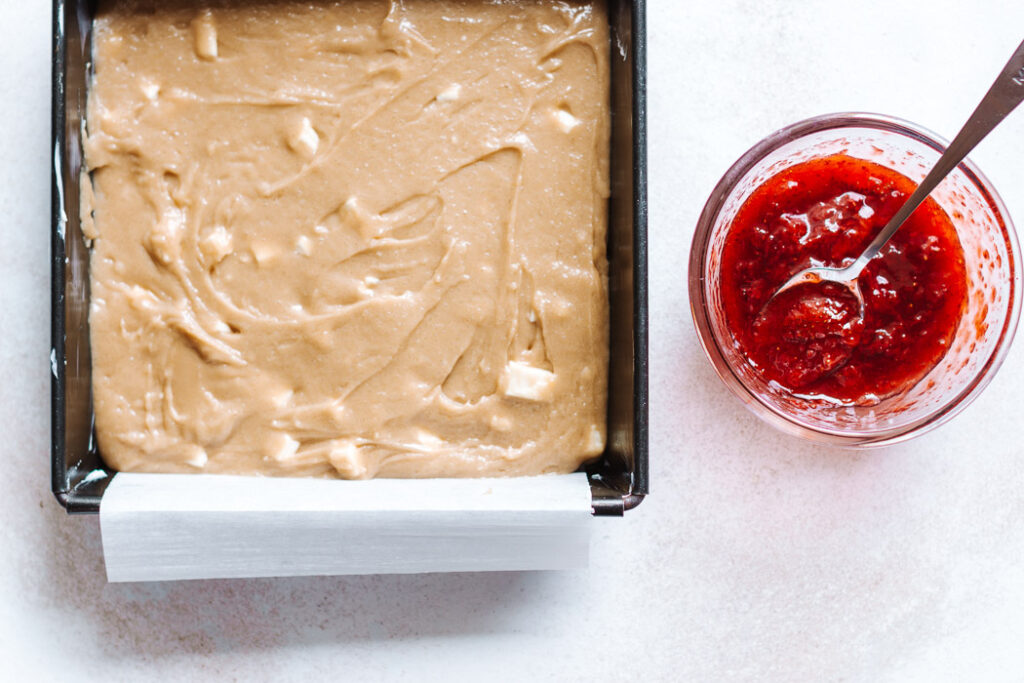
How do you precisely figure out cake pan sizes and conversions?
There are two methods to adjusting recipes for different size cake pans: by area or by volume. Whichever way you go, you’ll need to determine the area or volume of:
- The pan the recipe calls for
- The pan you want to use
Here’s how to use simple math to find the area and volume of your pans. For standard pan sizes, like squares, rectangles, and round, I highly recommend sticking with finding the area. Because they are usually the same height, the area is the most important factor in determining how much batter you’ll need.
However, using volume to convert recipes works better for more irregular sized pans because the heights are entirely different. Loaf and Bundt pans, for example, are about half the area of 8-inch and 9-inch square pans, but the sides are taller so usually you can substitute one for another.
The most important thing to note is that you can always round up when converting a recipe – you may just have some leftover batter.
Method 1: Find the area
Area of common pan sizes
Here’s an easy-to-read chart for reference before we get started.
Square pans
8 x 8 inch = 64 square inches
9 x 9 inch = 81 square inches
10 x 10 inch = 100 square inches
Rectangular pan
11 x 7 = 77 square inches
13 x 9 = 117 square inches
Round pans
6-inch round = 29 square inches
8-inch round = 50 square inches
9-inch round = 64 square inches
Springform pan
9-inch round = 64 square inches
10-inch round = 79 square inches
Loaf Pans
8.5 x 4.5 x 2.5 inches = 38 square inches
9 × 5 x 3 inches = 45 square inches
Remember geometry class when you had to learn how to find the area of different shapes? Those skills are about to be incredibly useful.
To convert cake pan sizes based on area, you need to figure out the area of the pan you have and the area of the pan the recipe calls for. Then, determine the difference and multiply each ingredient amount by that number (I swear it’s easier than it sounds).
The two basic math formulas you need to know are:
- The area of squares and rectangles is length x width.
- The area of a circle is pi (remember pi? It’s equivalent to 3.14) times the radius squared (A = πr2).
Let’s look at an example of a recipe that calls for an 8×8-inch pan:
To figure out the area of an 8×8 square inch pan, we need to do the following equation:
8×8=64 square inches.
But if all you have is a 13×9-inch pan, what do you do? That’s right, find the area!
13×9=117 square inches.
The recipe makes enough for 64 square inches (the area of an 8×8-inch pan). The next step is to divide the area of the pan you have by the area of the pan that the recipe calls for. So:
117÷64=1.82.
Therefore, you need to multiply every ingredient amount by 1.82 to proportionally convert the recipe for the 13×9-inch pan size (this number is commonly referred to as the decimal factor). However, 1.82 is very close to 2, so to make your life easier, you could simply double the recipe, knowing you’ll have some batter leftover.
But what about circle pans? I don’t remember anything about pi!
Not to worry! It’s truly easier than it sounds, I promise. Let’s say you want to make the same recipe but all you have is a 6-inch round pan. Take the equation to find the area of a circle: A = πr2. The radius of a 6 inch pan is 3. So insert it into the following equation:
3.14(3)² = 28.26, which we can round up to 29 square inches.
In this case, the pan you want to bake in has a smaller area than the 8×8-inch pan the recipe calls for. So what do you do? Divide! Take the size of the pan you have and divide by the size of the pan in the recipe:
29÷64 = .45
You’ll need to multiply every ingredient by a decimal factor of .45 to determine how much of each you’ll need for a 6-inch round pan. Or, simply half the recipe because .45 is so close to .5.
Tip: If you take a look at the area measurements above, you’ll notice that some pans have the same area. For example, both 8×8-inch square pans and 9-inch round pans have areas of 64 square inches. So if this is all you have, you’re in luck! No math required. Simply follow the recipe as it is.
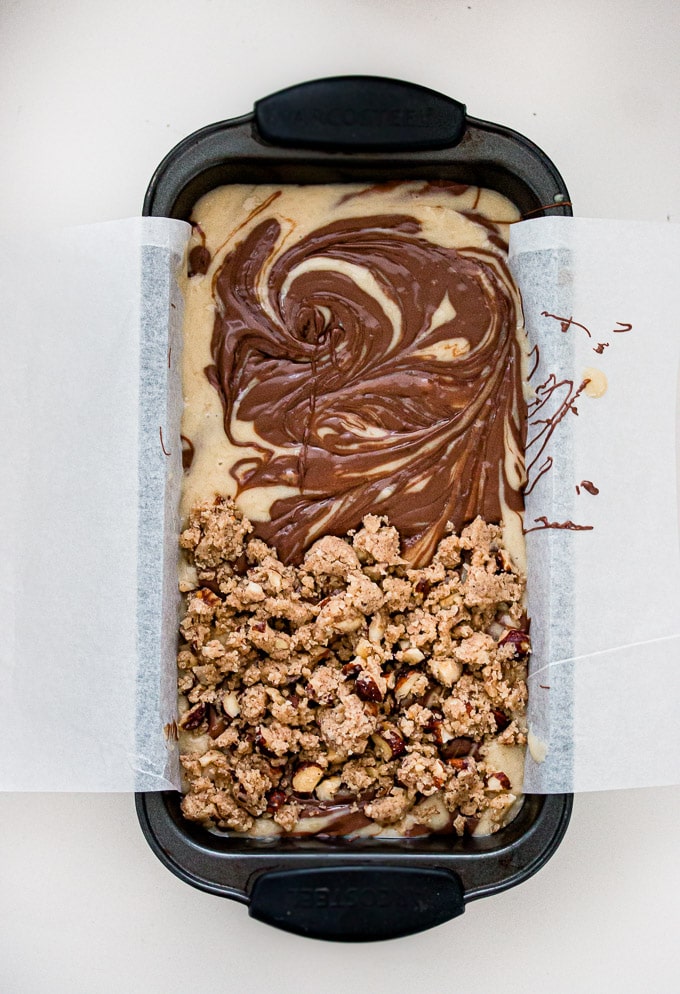
Method 2: Find the volume
Below is an easy-to-read chart of the volumes of common pan sizes.
Square pans
8 x 8-inch = 8 cups (1.9 liters)
9 x 9-inch = 10 cups (2.3 liters)
10 x 10-inch = 12 cups (2.8 liters)
Rectangular pans
11 × 7-inch = 10 cups (2.4 liters)
13 × 9-inch = 14 cups (3.3 liters)
Round pans
6 × 2-inch = 4 cups (960ml)
8 × 2-inch = 6 cups (1.4 liters)
9 × 2-inch = 8 cups (1.9 liters)
Springform pans
9 x 2.5-inch = 10 cups (2.4 liters)
10 x 2.5-inch = 12 cups (2.8 liters)
Loaf pans
9 × 5-inch = 8 cups (1.9 liters)
Bundt pan
10 × 3.5 in (25 x 9 cm) = 12 cups (2.5 liters)
To determine the volume of a pan, fill a pan with water using a cup measurer and see how many cups fit. For example, if it fills with about 6 cups, that’s the volume! This method works better for irregular sized pans, like loaf and Bundt pans, since the area is more difficult to calculate.
However, you can calculate it mathematically, too. Converting the recipe from one pan size to another by volume follows the same protocol as by area.
Let’s use the same example as above to show how you can get the same results. An 8×8-inch square pan is equivalent to 8 liquid cups. If you want to bake the recipe in a 13×9-inch square pan (14 liquid cups), divide the volume of the pan you have by the volume of the pan the recipe calls for:
14÷8 = 1.75.
This is virtually the same as 1.82, which was the result when converting the same pan sizes by area.
How do I know how many eggs to use?
This is when having a scale comes in handy. It’s impossible to figure out what .6 of an egg is without a scale. Of course, you can eyeball it if you don’t have one, but for accuracy’s sake, I highly recommend weighing your ingredients.
If your decimal factor is .6, and the recipe calls for 2 eggs, here’s how you would figure out how much egg to use:
1) Crack two eggs in a bowl and weigh them. 1 large egg weighs 50-60g, so let’s say the total weight is 110g.
2) Multiply 110g x .6, which equals 66g. This is the total amount of egg you need for your adjusted recipe.
Do you still have questions? Feel free to ask them in the comments below! I also highly recommend downloading the free printable I’ve included below to keep as a kitchen resource. Happy baking!
Some of my favorite cake recipes
- Orange Cake: Super moist and bursting with fresh orange flavor.
- Honey Cake: Sweet and full of warm spices.
- White Cake: The perfect cake for any special occasion.
- Carrot Cake: An irresistible carrot cake covered in velvety-smooth cream choose frosting.
- Chocolate Bundt Cake: Rich, indulgent and glazed with chocolate.
- White Chocolate Cake: The delicate flavor of white chocolate creates an amazingly delicious, moist cake.

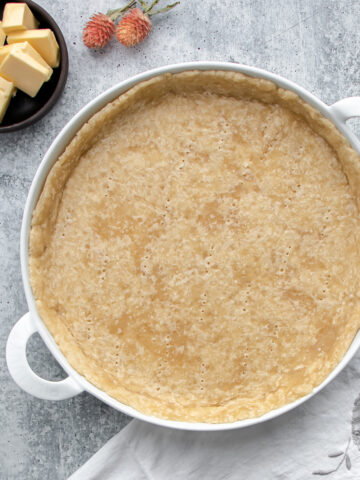
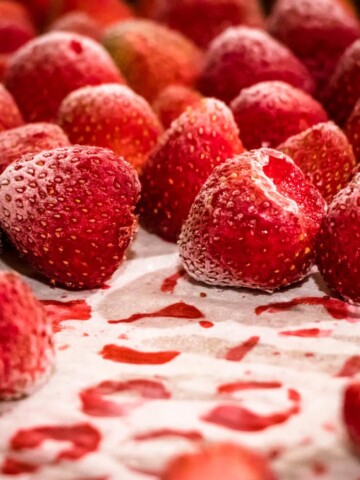
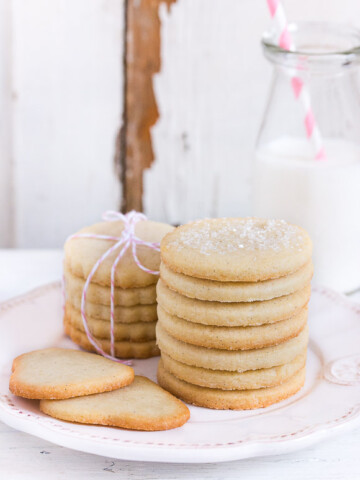
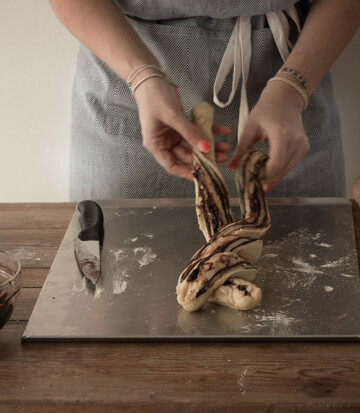
JJ says
11 by 7 rectangles is 77 not 117. I know it’s just a typo, but you might want to change it. Thanks.
JJ says
Very, very useful. Thanks for posting these.
Talia @ Pretty. Simple. Sweet. says
Hi JJ, so glad you find the article helpful! And thank you for pointing out the typo – it’s been corrected 🙂
Suzanne Fisher says
Thanks for this no nonsense kitchen aid. But I do have a question, a cheesecake recipe calls to bake in 8″ square pans, I’d rather bake in a 9″ springform. They both have the same area 64 sq”, but pretty significant volume difference. What is the deciding factor? Area or volume?
Again, thanks so much for all this information, printing it out now! lol But will still wait your opinion before I bake!!
Stephanie @ Pretty.Simple.Sweet. says
Hi Suzanne! Your cheesecake will work just as well in a 9″ springform pan. They should yield almost the exact same height (finished product) and have almost the same bake times too! I always prefer a 9-inch springform for Cheesecakes unless I’m making cheesecake bars. My 9-inch pan is taller than my 8×8 so it always works to use a slightly taller pan.